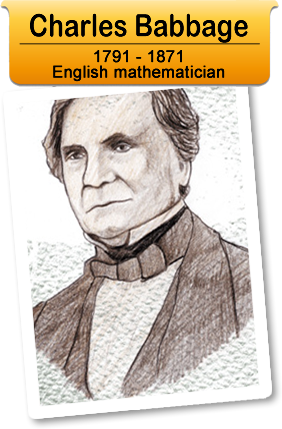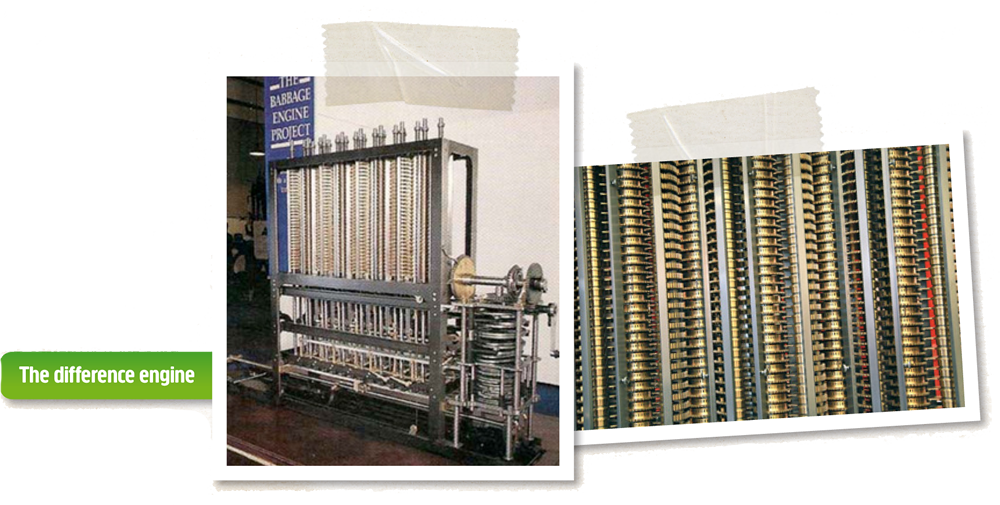Inventor: Charles Babbage
- Lortu esteka
- Helbide elektronikoa
- Beste aplikazio batzuetan
 Charles
Babbage was born in London in 1791. He was very good at Mathematics and
when he went to Cambridge University in 1810, he already knew more
about calculus and algebra than the professors. He later became a
professor of Mathematics at Cambridge and founded the Analytical and
Statistical Societies. Charles
Babbage was born in London in 1791. He was very good at Mathematics and
when he went to Cambridge University in 1810, he already knew more
about calculus and algebra than the professors. He later became a
professor of Mathematics at Cambridge and founded the Analytical and
Statistical Societies.By the middle of the 18th century, complicated calculations were needed in navigation, banking, industry etc. These calculations were done by hundreds of human adding machines. There were lots of mistakes, of course. In 1812, Babbage, as a student, decided that a machine could calculate all the mathematical tables automatically. So in 1824 he started to build “the largest calculating engine that could ever be needed”. His first plans were for the table-making Difference Engine. It would calculate tables mechanically and even print them out so there would be no room for human error. By 1832, the Difference Engine had still not been completed but Babbage had designed the far more complicated and ambitious Analytical Engine. This could have been a giant mechanical version of the modern computer, running a program with a mechanical memory and central processor stored on punched cards. But the machine was never built and Babbage died in 1871, a lonely and angry man. Babbage had understood the principles of the modern computer and also wide scale communication systems, but he was born in the wrong century. Besides the Calculating Machines, Babbage also invented the ‘black box’ to record accidents on trains (and now on aeroplanes), lighthouse signalling, and a key to open any lock; the skeleton key.  |
- Lortu esteka
- Helbide elektronikoa
- Beste aplikazio batzuetan
